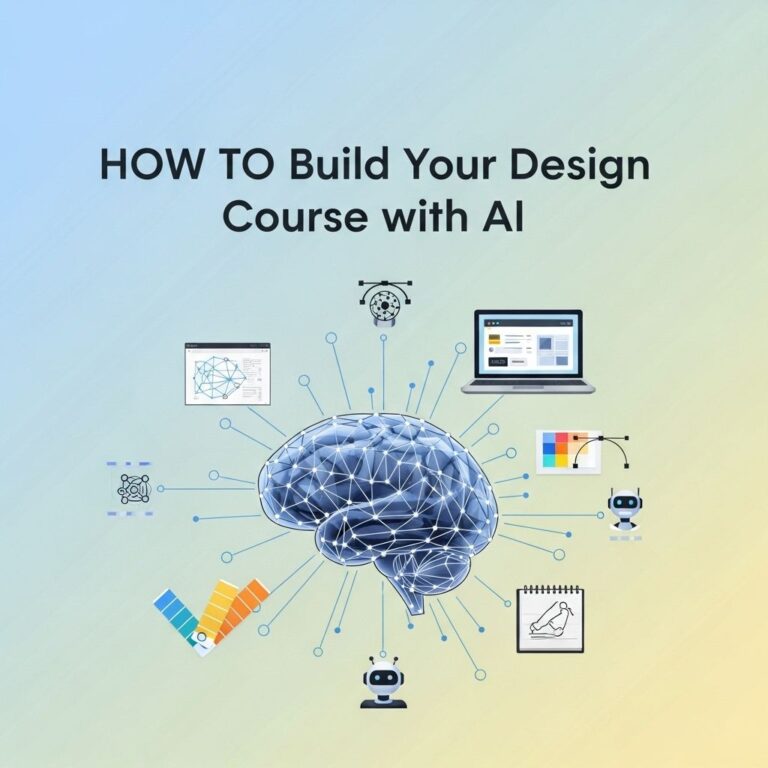In today’s rapidly evolving digital landscape, integrating artificial intelligence into educational frameworks, especially design courses, has become imperative. The transformative power of AI can streamline course development, enhance learning experiences, and make design education more accessible and engaging. This article delves into the essential steps and considerations for building a design course leveraging AI technologies.
Table of Contents
Understanding the Role of AI in Design Education
Artificial Intelligence is reshaping various industries, and education is no exception. Here’s how AI is influencing design education:
- Personalized Learning: AI can tailor learning experiences to individual student needs, allowing for customized feedback and resources.
- Automated Assessment: AI tools can evaluate design assignments quickly and provide constructive feedback.
- Enhanced Creativity: AI can assist in brainstorming and idea generation, enabling students to explore innovative design solutions.
Identifying Your Course Objectives
Before diving into the development process, it’s crucial to outline clear objectives for your design course. Consider the following:
Defining Learning Outcomes
What do you want your students to achieve by the end of the course? Here are some examples of learning outcomes for a design course:
- Understand fundamental design principles and theories.
- Apply AI tools in the design process.
- Create a portfolio showcasing their design projects.
Target Audience
Identify who your ideal learners are:
- Beginners with no prior experience in design.
- Intermediate designers looking to enhance their skills.
- Professionals aiming for advanced tools and AI applications in design.
Course Structure and Content Development
Once your objectives are defined, you can start structuring your course. Consider the following elements:
Module Breakdown
Divide your course into manageable modules or sections:
| Module | Topics Covered | Duration |
|---|---|---|
| Module 1 | Introduction to Design Principles | 1 Week |
| Module 2 | Basics of AI in Design | 2 Weeks |
| Module 3 | Hands-on AI Tools | 2 Weeks |
| Module 4 | Project Development | 3 Weeks |
Integrating AI Tools
Incorporate various AI tools to enhance the learning experience. Popular tools include:
- Adobe Sensei: For image recognition and automated design features.
- Canva: For graphic design with AI-assisted templates.
- Figma: For collaborative design projects with AI capabilities.
Creating Engaging Learning Materials
The quality of your course materials is essential for student engagement. Consider various formats:
Video Lectures
Create engaging video lectures with screen recordings and demonstrations of design tools. Use clear visuals and concise explanations to enhance understanding.
Interactive Quizzes
Incorporate quizzes to test knowledge retention and provide instant feedback. Tools like Kahoot! and Quizlet can be beneficial.
Discussion Forums
Establish discussion boards where students can share ideas, feedback, and resources. This encourages peer learning and engagement.
Implementing Assessment Strategies
Assessments are crucial for measuring student progress. Here are some effective strategies:
Formative Assessments
Utilize quizzes and short assignments throughout the course to gauge understanding and provide timely feedback.
Summative Assessments
At the end of each module, consider final projects or presentations that allow students to demonstrate their learning.
Peer Review
Encourage students to review each other’s work. This not only fosters collaboration but also develops critical analysis skills.
Marketing Your Design Course
Once your course is developed, it’s time to attract students. Here are effective marketing strategies:
Creating a Strong Online Presence
Build a website or landing page that highlights your course features, objectives, and testimonials. Include engaging visuals and clear calls to action.
Utilizing Social Media
Leverage platforms like Instagram, LinkedIn, and Facebook to reach your target audience. Share tips, design challenges, and success stories to engage potential students.
Partnerships and Collaborations
Partner with design organizations, schools, or influencers to reach a broader audience. Collaborative webinars or guest lectures can enhance your course’s visibility.
Feedback and Continuous Improvement
After launching your course, it’s vital to gather feedback from students:
Surveys and Feedback Forms
Distribute surveys at the end of the course to understand what worked and what didn’t. Use this information to refine your curriculum.
Ongoing Updates
Stay updated with the latest trends in design and AI, and continuously update your course materials to keep them relevant.
Conclusion
Building a design course with AI integration not only enhances the learning process but also prepares students for the future of design work. By carefully planning your course structure, incorporating innovative tools, and focusing on continuous improvement, you can create a valuable educational experience that meets the evolving demands of the design industry. Embrace the power of AI, and transform your design course into a dynamic and engaging learning environment.
FAQ
What are the key components of a design course using AI?
A design course utilizing AI should include modules on AI fundamentals, design principles, practical applications of AI in design, hands-on projects, and evaluation methods.
How can AI enhance the learning experience in a design course?
AI can personalize learning paths, provide instant feedback, automate grading, and offer intelligent tutoring systems that adapt to students’ needs.
What tools and technologies are recommended for teaching design with AI?
Recommended tools include AI design software like Adobe Sensei, machine learning platforms like TensorFlow, and collaborative tools like Figma that integrate AI features.
How do I assess students’ progress in an AI-based design course?
Assessments can include project-based evaluations, peer reviews, quizzes on AI concepts, and tracking engagement through AI analytics tools.
What industries can benefit from a design course focused on AI?
Industries such as graphic design, product design, fashion design, and web development can all benefit from integrating AI into their design processes.
What are the future trends in AI and design education?
Future trends include increased use of virtual reality (VR) in design training, AI-driven design tools, and a growing emphasis on ethical AI practices in design.









